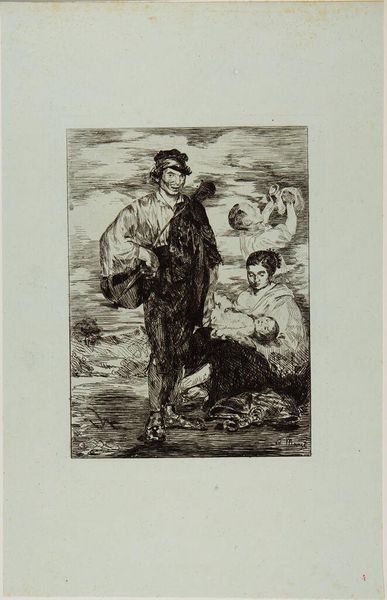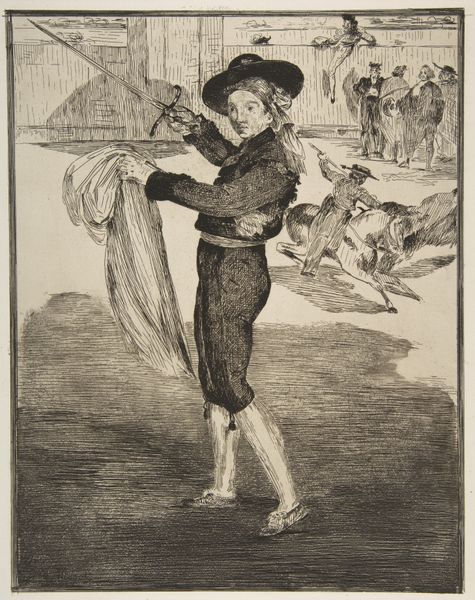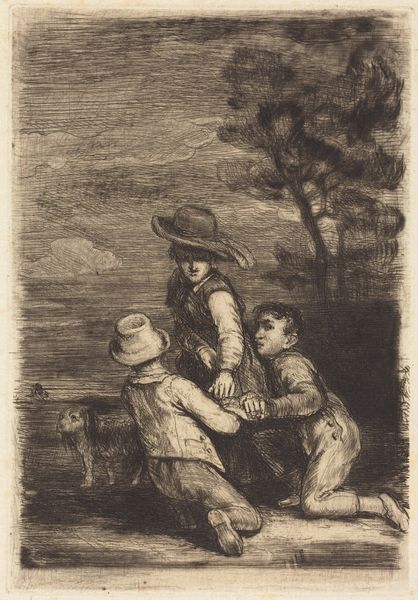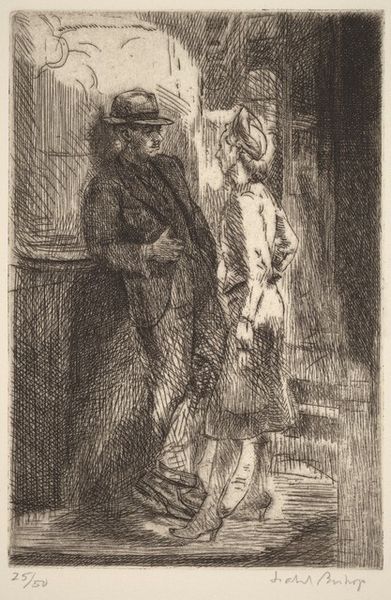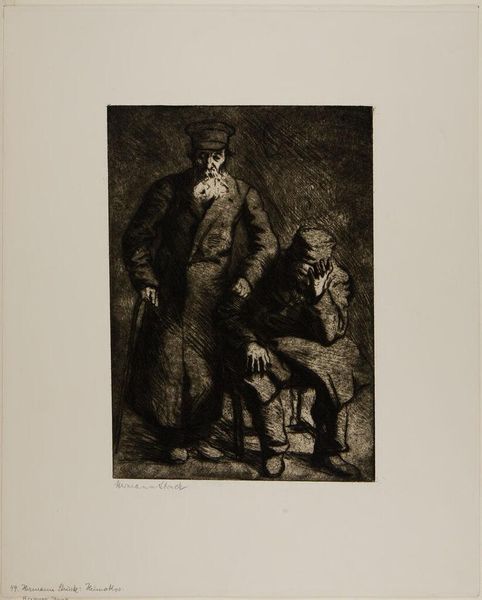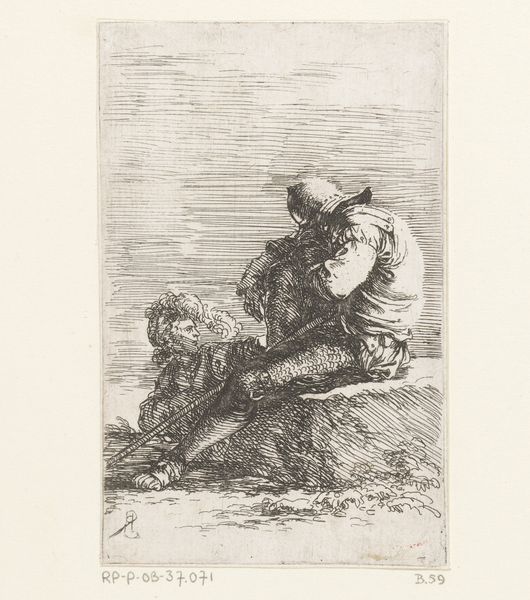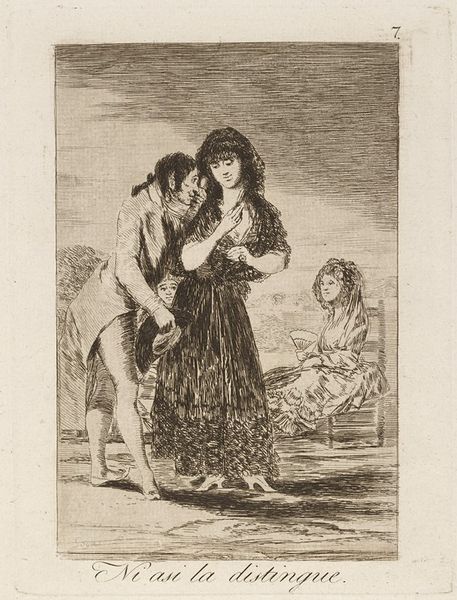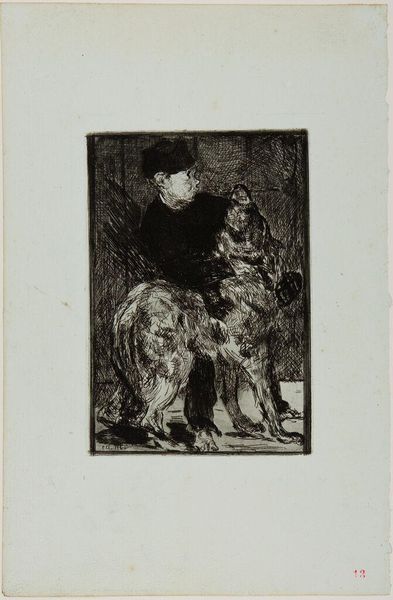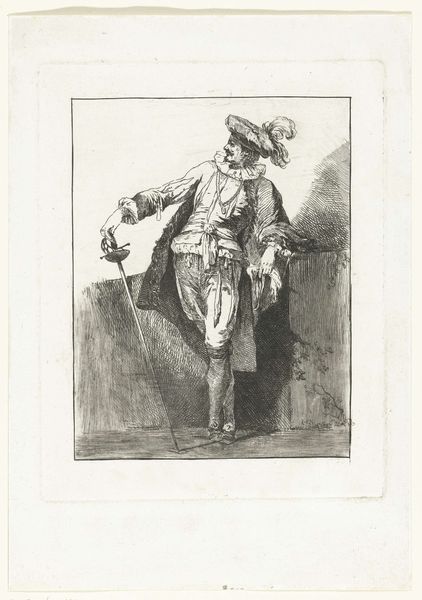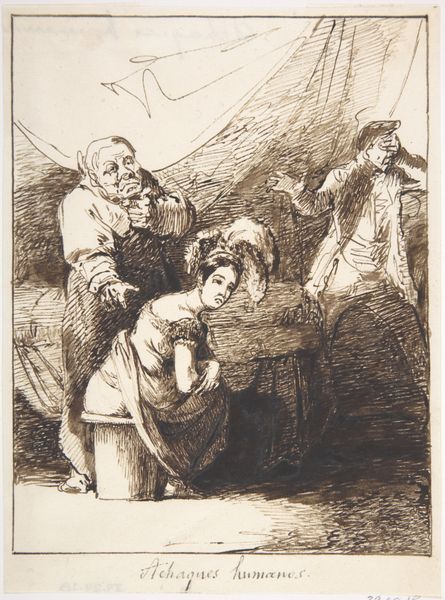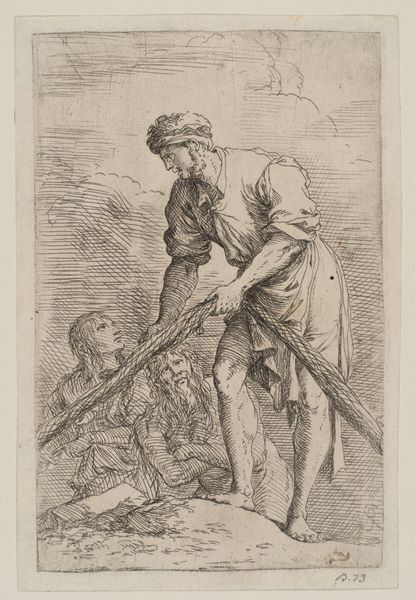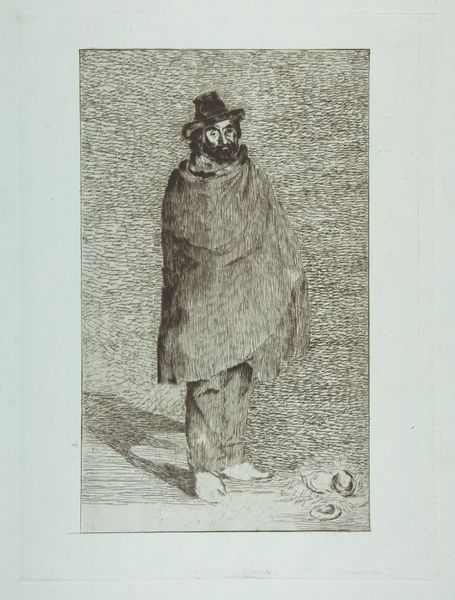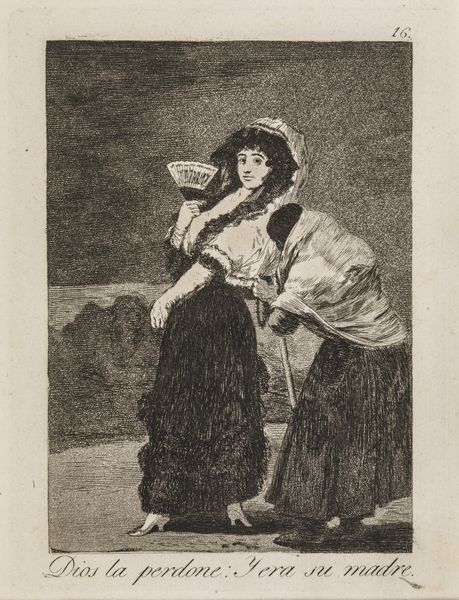
drawing, print
#
portrait
#
drawing
# print
#
men
#
portrait drawing
#
genre-painting
#
realism
Dimensions: plate: 12 x 9 3/8in. (30.5 x 23.8cm) sheet: 17 5/8 x 11 5/8in. (44.8 x 29.5cm)
Copyright: Public Domain
Curator: Welcome. We're looking at Édouard Manet's 1862 print, "The Gypsies," or "Les Gitanos." It's currently housed here at the Metropolitan Museum of Art. Editor: My first impression is stark and arresting. The sharp lines create a feeling of both grit and fragility. The way the family seems both present and ghostly is a bit unsettling. Curator: Manet certainly plays with binaries, doesn’t he? I see in this work an exploration of marginalization. It's a study of how the Roma community was viewed—and arguably continues to be viewed—through the lens of societal otherness. Manet, while part of the bourgeois himself, had an enduring fascination with those on the fringes. Editor: Absolutely. I see a real contrast here between the upright figure of the man and the grounded posture of the mother and child, it echoes archetypical symbols. The standing man with what looks to be a musical instrument embodies freedom and journey. Conversely, the mother evokes notions of grounding and protection and shelter in the shape she makes in the composition, almost cavelike. Curator: And what do you make of their dress? Note how Manet renders their garments, suggesting both a certain romanticism and a clear sign of poverty. Editor: There is certainly a touch of the exotic about their clothes which reinforces that notion of ‘otherness’ that you mention. It echoes back to how ‘gypsies’ are depicted through literature and popular culture over the centuries; however, these depictions have been deeply problematic, because the reality for the Roma population in France and elsewhere in Europe in 1862, and since then, has been poverty and discrimination. Curator: Precisely. It raises questions of exploitation—both in reality for the people depicted, and also metaphorically within the space of representation itself. What is Manet's responsibility as an artist, given his own privileged position? The boy drinking is a poignant symbol. This simple act connects to larger cycles of life, survival, and cultural continuity. What survives, despite everything? Editor: That boy's action, contrasted against the general starkness, speaks volumes about the resilience of cultural practices against historical odds, echoing what is also evoked with musical instruments as a signifier of cultural production. Seeing these elements brings home what the print encapsulates—simultaneous strength, struggle, and survival, woven within the image. Curator: This dialogue reveals the multilayered complexities within "The Gypsies". Manet confronts us with an unsettling gaze and social narrative that compels ongoing, intersectional questioning of the power imbalances within society. Editor: Absolutely. And how visual symbols persist, carrying history within themselves—demanding reflection from any viewer brave enough to meet them.
Comments
No comments
Be the first to comment and join the conversation on the ultimate creative platform.

